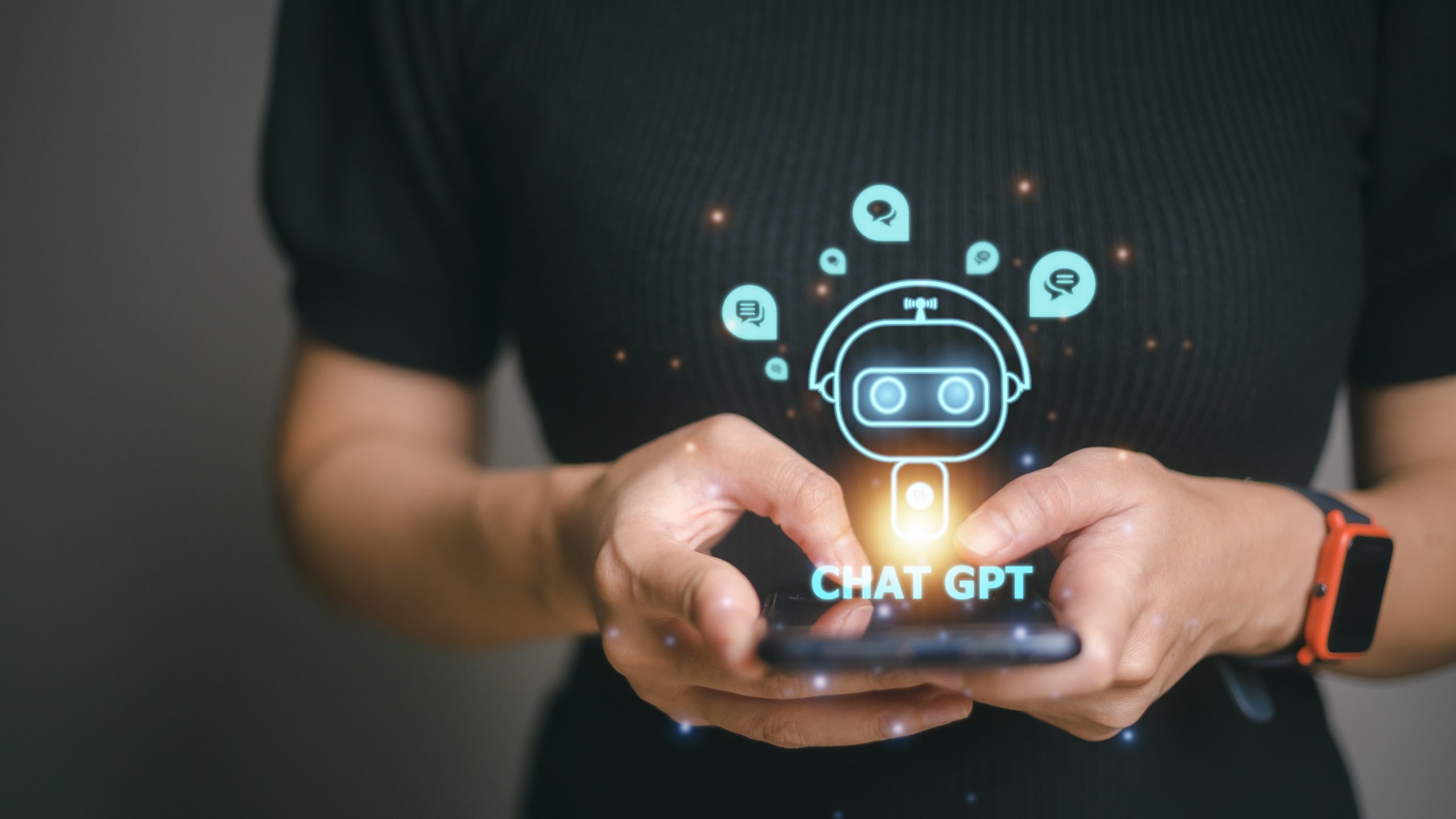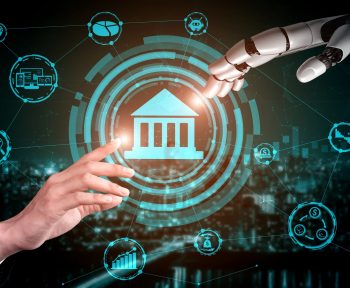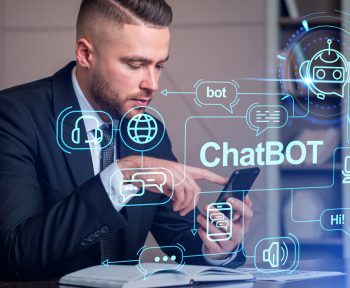OpenAI’s launch of ChatGPT (Generative Pre-trained Transformer), has catalyzed the transition of AI from the peripheries to the very forefront of technological development. A tool that exploits Artificial Intelligence, Machine Learning and Natural Language Processing models to create algorithms that create human-like responses, ChatGPT is regarded by tech experts as a positive step in the direction of the democratization of AI. As a Large Language Model (LLM), ChatGPT can provide accurate and coherent responses to queries based on ‘understanding’ user intent and context. It indexes and deciphers words, phrases, and sentences through statistics, reinforcement learning, and supervised learning. The result is mimicking writing styles and refining responses with successive conversations through programmed and reinforced techniques.
The number of industries and sectors benefiting from Artificial Intelligence is rising at an unprecedented pace. Design, engineering, infrastructure, education, food tech, financial services, banking, and many more fields are experiencing digital transformation at full throttle. Even though chatbots like Alexa, Siri, Olivia, and others have long dominated the automation space, the most recent iterations of ChatGPT give it an advantage over the competition by responding to a range of queries across different knowledge domains with answers and researched solutions. Adopting ChatGPT may mark the beginning of establishing AI and ML as fundamental and essential to organizational functionality.
How to use the versatile ChatGPT
With its ability to create content and provide solutions by accessing large amounts of web text, ChatGPT can be used as an application tool in various processes and services across industries. In a matter of weeks following its launch, students, tech giants, multinationals and researchers have already been known to have exploited ChatGPT’s capabilities in several disciplines. A report confirms that an average of 13 million unique visitors used ChatGPT per day in January after reaching 1 million users in just five days.
Source: Statista.com
Here is a summary of the tasks it can perform:
- Text generation, summarization, classification and completion: ChatGPT can be used for writing content and creating text for several applications. Additionally, fine-tuning the content to make it useful for sentiment analysis, intent recognition, and other NLP applications can also be done with the help of ChatGPT.
- Dialogue generation: ChatGPT can generate conversation-like responses, which makes it helpful in supporting chatbots and virtual assistants.
- Scope for customer service automation: Answering questions and providing customer service can be made easier by utilizing ChatGPT. Additionally, reports can be generated faster and more accurately by exploiting the automotive capabilities of the bot.
- Sentiment analysis: To understand customer preferences and how they feel about a particular service or product, the NLP capabilities of ChatGPT can conduct need-based research and provide businesses with valuable insights. The data generated can also be used to ascertain whether a business can satisfy customer needs and help the organization accordingly improve its offerings.
- Making data structured: ChatGPT can augment the sorting, segmenting, classifying or management of unstructured data, which is a huge pain point for many types of businesses.
ChatGPT: Not without opponents
The year 2022 has been significant for the advancement and adoption of technologies like AI and ML. Although social media platforms are already buzzing with tech enthusiasts’ and experts’ opinions on ChatGPT, much of the content demonstrates the technology’s enormous potential. In response to the most recent release of ChatGPT by OpenAI, industry leaders like Google are diligently researching and testing AI services, which will possess even greater versatility and functionality.
Recently, Google launched Bard, an experimental conversational AI service powered by LaMDA (Language Model for Dialogue Applications). Bard draws information from the internet to provide authentic and quality responses, and is trained to perform a number of creative tasks.
BLOOM, another Large Language Model, was launched a few months before ChatGPT. With features highly similar to ChatGPT, it possesses computational capabilities that individual researchers or research groups cannot replicate. The co-founder of machine learning app developer, Hugging Face Inc started the BLOOM project.
OPT, or Open Pretrained Transformer, was Meta’s attempt to launch an AI-driven chatbot with features that have quickly made it a viable alternative to ChatGPT. With comprehensive NLP capabilities, OPT is rapidly becoming the preferred choice in the Machine Learning sector.
The future of the market
The opportunities for the usage and adoption of ChatGPT are enormous. As per a report, it is estimated that approximately 100 million people will be employed in a myriad of jobs utilizing AI capabilities. It is inevitable that leading companies will strive to capture the market with their AI and ML expertise while matching the conundrum surrounding OpenAI’s ChatGPT. Innovators may look to build more creative, domain-specific offerings and solutions on existing platforms. The number of ‘opportunity spaces’ are many, including training and development, fitness coaching, counselling, customer service, and technical support, to name a few.
In addition to metamorphosing the technology landscape globally, the adoption of ChatGPT will, in the long run, impact the job market in terms of newer job roles being created in tech and non-tech firms, along with the requisite skill set to exploit this chatbot fully. Jobs such as analysts, customer service agents, QA engineers, and others are likely to evolve, in that they may be upgraded, besides creating a number of new positions across industries.

Potential benefits to the banking sector
The banking and finance services industry relies mainly on the business relationships of banks with their customers. Scores of customer statistics are made available to various departments to help them expand their reach and derive long-term value from each customer relationship. Mapped book deepening and onboarding new clients is an outcome of comprehensive knowledge of existing touchpoints. Additionally, day-to-day servicing also requires dedicated personnel to keep escalations to a minimum. ChatGPT can be leveraged to generate insights and analysis from large amounts of data to make well-informed decisions driving business growth and formulate customer-specific strategies for query resolution and retention leading to enhanced experiences.
The versatility of available technology must be exploited to simplify the plethora of banking functions. Automation of service tasks and answering FAQs can also be delegated to the chatbot. This will enable service agents to be free from routine tasks and focus on complex and high-value responsibilities. As a result, overall efficiency and customer satisfaction will improve immensely.
Frequently asked questions
- Is ChatGPT free to use?
Answer: Though the chatbot was free for use following its launch, OpenAI has announced its plans for a phased monetization of ChatGPT in the future. A free version will remain available, but by paying a monthly subscription for ‘ChatGPT plus’, users will be able to access additional features and have priority during high-traffic hours. The paid version is expected to go live in the next few weeks.
2. How can ChatGPT be used for work?
Answer: ChatGPT can be used for automating a number of work-related tasks. The AI-powered chatbot can write resumes, answer FAQs, respond to customer queries, elevate text quality, or write text for several different purposes.
The bot can also be trained to respond to queries in a conversational manner, resembling a dialogue. Large amounts of data can also be generated and deciphered with the help of AI and ML technologies, which are embedded in ChatGPT.
3. Where does ChatGPT get answers from?
Answer: ChatGPT is pre-trained to remember the flow of the conversation with a user, and by deploying a predictive approach to queries, it offers solutions. In addition, it can also access vast amounts of information on the internet to provide pertinent and personalized resolutions to anything a user may search for. However, it is essential to note that even though the chatbot ‘knows’, it is not ‘intelligent’ enough to replace human involvement.
4. How accurate is ChatGPT?
Answer: According to OpenAI, the answers given by ChatGPT can sometimes be misleading and inaccurate. However, it is completely accurate and correct for the vast majority of queries. Additionally, the degree to which ChatGPT has been pre-trained to solve a specific issue affects how accurate it can be. For example, a user asks the bot to write a complex computer program. If the bot is not trained enough to execute the task, the response it gives will, in all likelihood, be unimpressive.





